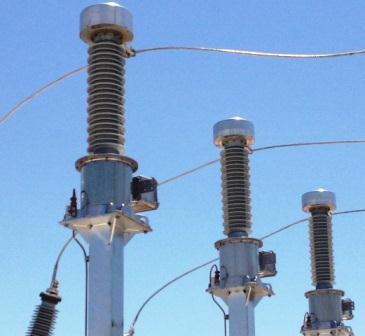|
Present day Supervisory Control and Data Acquisition (SCADA)
systems have evolved significantly in the last two decades by
taking advantage of the developments in information technology
(IT). They now deliver unprecedented functionalities for
electric grid management that was not available or cost
prohibitive in the earlier days. Consequently SCADA systems
have vastly expanded their role within a utility - from just a
tool that was used by operations team to a strategic platform
around which an utility can deploy modern work management
processes. Needless to say that selecting a right SCADA
platform can become a daunting task while the jargon confusing
at times. Having worked with multiple vendor SCADA platforms
over the last two decades APA has the unique advantage of
providing fact based guidance and bring hands-on experience in
implementing leading SCADA platforms in your organization.
APA provides complete project life cycle support in deploying
state-of-the-art SCADA platforms:
Conduct Requirement Identification Workshops:
This process usually conducted at client site is designed to
bring all stake holders together and a compile list of
requirements. Usually conducted in two sessions the first
session focusses on education about the current offerings and
capabilities of utility SCADA and examples of various
applications that can be deployed. The second session in the
form of a workshop is designed to encourage stake holders to
describe their needs and wish list in simple words which APA
would translate to high level technical requirements.
Business Case Evaluations: Where appropriate,
one or several business case evaluations is prepared to bring
out the value and return on investments. For example there can
be one high level business case to evaluate the return on
investment on the SCADA platform overall, while individual
advanced applications evaluated on the own merits. It is not
uncommon that many utilities decide to deploy the SCADA
platform while choosing to deploy some advanced applications
sooner than others or consider a phased deployment approach.
Conceptual Design: This critical step allows
stake holders with various levels of SCADA awareness to start
participating in the design and selection of SCADA platform,
understand how it will benefit them in improving their
productivity in their job. This process allows the stake
holders to understand the subtle nuances of capabilities and
helps sets expectations from the new SCADA platform at a pace
comfortable to them. This eventually leads to creation of a
well-rounded formal "Request For Proposals" with
contributions from all stake holders ensuring future proofed
system definition to initiate procurement.
Procurement Process: APA typically works hand
in hand to guide the process of procurement from RFP creation,
review and assist in issuing to vendors. APA's streamlined
process ensures that the key client personnel are aware of
various steps required to evaluate, shortlist and select the
right vendor and product.
Detailed Design and Implementation: APA's
core strength is in assisting its client to prepare for
implementation while working with their subject matter experts
in evolving the detailed design, preparing key component
procurement specifications.
Typically APA will provide the following services during
implementation phase
-
Prepare detailed functional specifications for hardware and
software systems.
-
Identify requirements from remote substations and DA sites
and provide assistance to implement them.
-
Make sure substation remote Intelligent Electronic Devices
are ready to be integrated with SCADA.
-
Identify changes required in the wide area communication
requirements and assist in its implementation
-
Work with selected SCADA vendor and provide technical
coordination
-
Prepare SCADA point list, software engineering details.
-
Front end processor and communication protocol (DNP3.0,
Modbus etc.) to connect with remote devices in substations
-
Assist in creation of Human Machine Interface, SCADA one
line diagram for visualization of network, alarms and
events.
-
On site system integration, testing and troubleshooting
- Formal System Acceptance Testing (SAT)
- Coordinate training requirements.
-
Assist utility personnel in gaining familiarity with newly
installed system.
|




